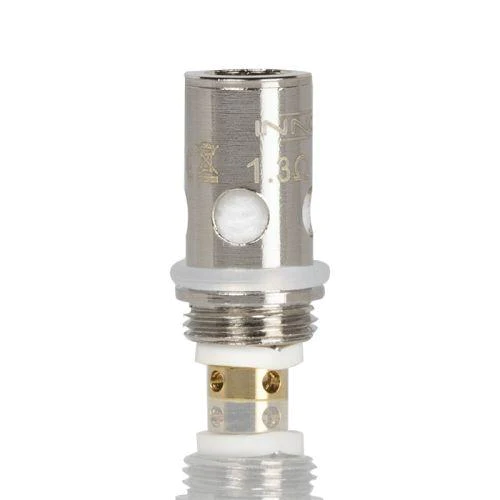
Understanding the Science Behind Your Coil Vape
Vaping has skyrocketed in popularity over the past few years, with the variety of devices, flavors, and vaping methods expanding daily. But as the vaping community grows, so too does the curiosity about what makes these devices tick. One key component that often draws attention is the vape coil. But what exactly is a vape coil, and how does it work? Let's break down the science behind your coil vape.
What is a Vape Coil?
Before we dive into the heart of the matter, it's essential to understand the core component we're discussing. A vape coil is essentially the heart of your vape pen or mod. It's the part of your device that heats up the e-liquid and turns it into the vapor you inhale. Without the vape coil, there'd be no vaping at all!
Vape coils come in many shapes, sizes, and materials. The most common coil types are Kanthal (a type of iron, chromium, and aluminium alloy), stainless steel, nickel, and titanium. Each of these materials has its pros and cons, affecting your vape's flavor, cloud production, and battery usage.
The Science Behind the Heat
Now, let's get a bit science-y. When you activate your vape device, the battery sends a current to the coil. This electrical energy then transforms into heat energy through a process known as Joule heating (or resistive heating). Simply put, the coil's electrical resistance and the applied voltage determine the heat produced.
Ohm's Law: The Heart of Coil Science
This is where Ohm's Law comes into play, a principle every vaper should at least be aware of. Ohm's Law states that the current running through a conductor between two points is directly proportional to the voltage across the two points. So, the resistance of your coil plays a significant role in determining how hot it gets and how quickly.
Lower resistance (sub-ohm) coils will heat up faster and produce a warmer vapor, great for cloud chasers. On the other hand, higher resistance coils take longer to heat and produce a cooler vapor, often preferred by flavor enthusiasts.
Why Coil Material Matters
The material of the coil significantly influences its performance. Kanthal, the most commonly used, is known for its durability and is a great choice for Variable Wattage devices. Nickel and Titanium coils offer low resistance and rapid heat-up times, perfect for Temperature Control (TC) devices. Finally, Stainless Steel coils offer the best of both worlds, being compatible with both VW and TC modes.
Coil Life and Maintenance
Proper maintenance is key to ensuring your vape coil lasts as long as possible. With regular cleaning and appropriate usage, a good coil should last anywhere from a week to a month. However, many factors can shorten a coil's lifespan, including high sugar e-liquids that cause coil gunk, chain vaping, and incorrect power settings.
To maximize coil life, remember to prime new coils (soaking the wick before use), clean your device regularly, and use a suitable power setting.
Choosing the Right Coil
With so many options available, choosing the right coil for your vape can seem daunting. However, by understanding your device's specifications, your vaping preferences, and the science behind vape coils, you can make an informed decision.
Are you chasing clouds? Opt for a sub-ohm coil with lower resistance. If flavor is your thing, go for a coil with higher resistance. Also, consider the coil material, keeping in mind your device's capabilities (whether it supports VW or TC mode).
Coil Configurations: Adding a Twist to the Vape Experience
Vape coils come in various configurations, each offering unique benefits to your vaping experience. The most common ones include:
- Single Coil: This is the simplest coil configuration. It's perfect for beginners, easy to install and use, and provides a cool to moderate amount of vapor and flavor.
- Dual Coils: As the name suggests, these have two coils. They heat up more e-liquid, enhancing the flavor and producing more vapor. However, they also drain the battery faster and might be a little more challenging for beginners.
- Twisted Coils: These are two (or more) strands of wire twisted together. Twisted coils increase surface area, leading to better flavor and vapor production.
- Clapton Coils: Named after the guitar string, these are made by wrapping a thinner wire around a thicker core. They retain heat for longer, providing a consistent vape and excellent flavor.
Choosing the right coil configuration depends on your vaping style and what you want to get out of your vape. Remember, experimenting with different coil configurations and materials can drastically improve your vaping experience.
Anatomy of a Coil: Beyond Just Wire
Although we've focused mostly on the wire in a vape coil, there's more to a coil than just that. A complete coil assembly includes the coil itself (the wire), the wick (usually made of cotton), and the casing that holds everything together.
The wick's role is equally essential as the wire. It absorbs the e-liquid and brings it into contact with the heated coil, turning the e-liquid into vapor. Cotton is a popular wicking material due to its excellent absorbency and minimal impact on flavor.
Understanding Coil Ratings: MTL vs DTL
Grasping the relationship between your preferred vaping method and the choice of coil is crucial. Primarily, two major techniques dominate the vaping landscape: Mouth-to-Lung (MTL) and Direct-to-Lung (DTL).
MTL is similar to how one would smoke a traditional cigarette. You take a puff, hold it in your mouth for a moment, and then inhale it into your lungs. This style generally requires higher resistance coils (1 ohm and above) and works best with higher PG e-liquids.
DTL, on the other hand, involves drawing the vapor directly into your lungs, like taking a deep breath. This style requires lower resistance (sub-ohm) coils, typically used with high VG e-liquids for more substantial vapor production.
Coil Trouble? Here's How to Troubleshoot
Now that you're a coil expert let's touch on some common coil-related issues and how to solve them:
- Burnt Taste: This is often due to a burnt-out coil or not enough e-liquid reaching the coil. Make sure to prime new coils and keep your e-liquid topped up to prevent dry hits.
- Leaking: If your device is leaking, it could be due to a worn-out coil. Check your coil and replace it if necessary.
- Spitting or Popping: Sometimes, the coil might spit hot e-liquid or make a popping sound. This could be due to over-saturation, a too-loose wick, or too low wattage. Adjust these elements as necessary.
The Environmental Impact of Coils
Finally, it's worth mentioning that like any other consumable, vape coils have an environmental impact. Most coils are not recyclable due to their mixed materials. Therefore, consider ways to reduce waste, such as using rebuildable coils or devices, which allow you to replace the cotton wick and keep the metal coil for longer.
To conclude, understanding the science behind your vape coil can truly elevate your vaping experience. From materials and resistance to configuration and maintenance, every aspect plays a significant role in the resulting flavor, cloud production, and battery life. As you continue your vaping journey, don't hesitate to experiment with different setups to find your ideal vape.
Vaping is not just a substitute for smoking. For many, it's a hobby and a community. The more you learn, the better you can enjoy it and contribute to the conversation. So keep exploring, stay informed, and always remember – the best vape is the one that you enjoy the most!
Happy vaping!



